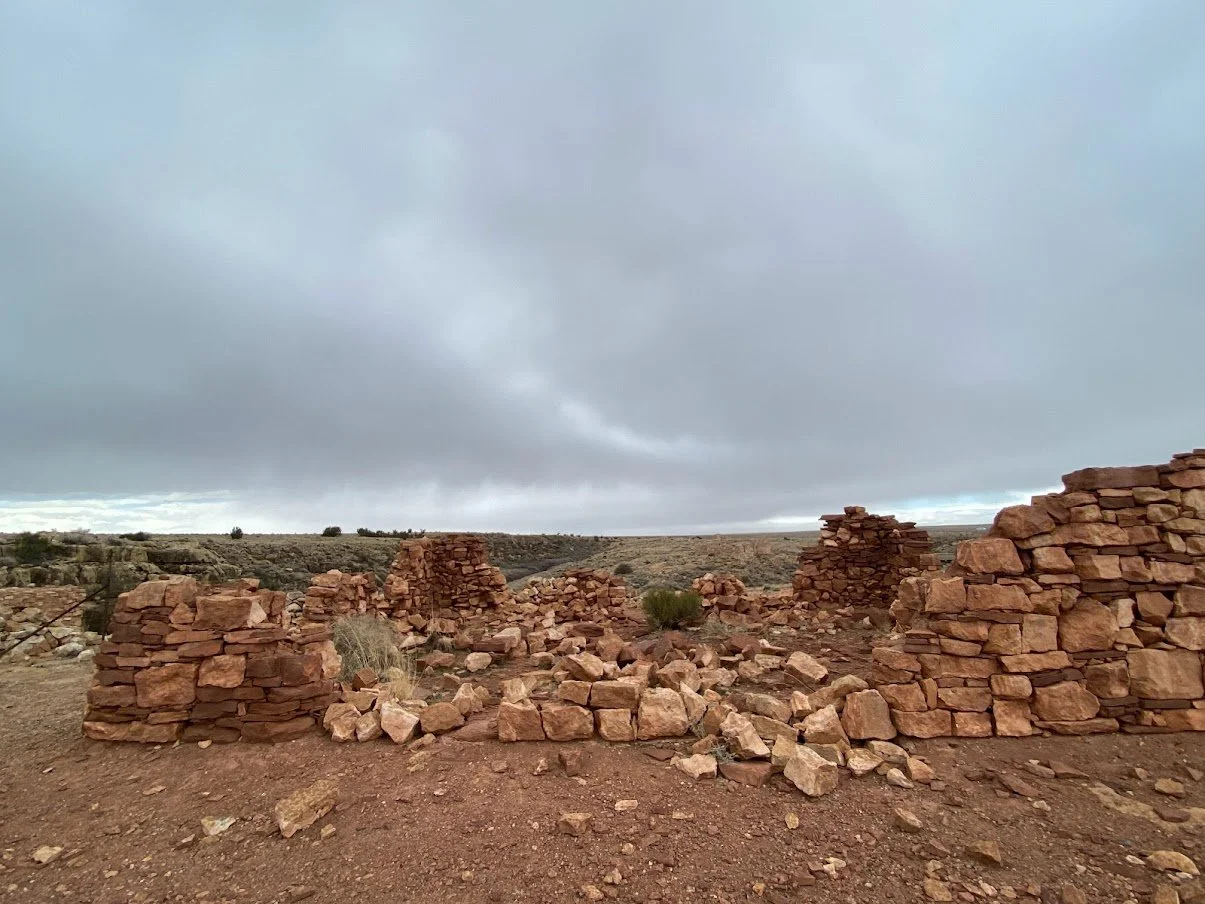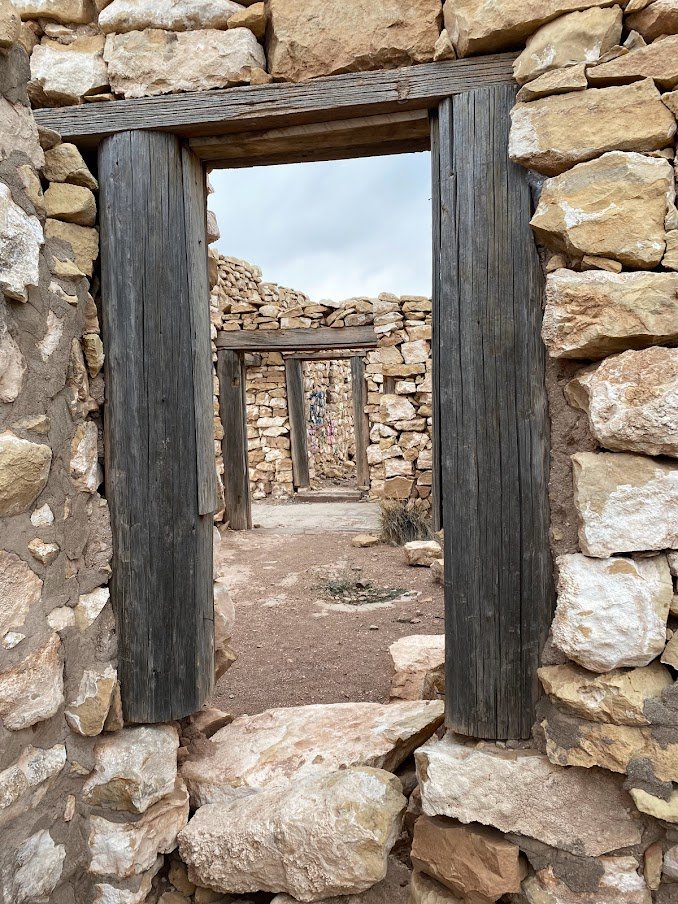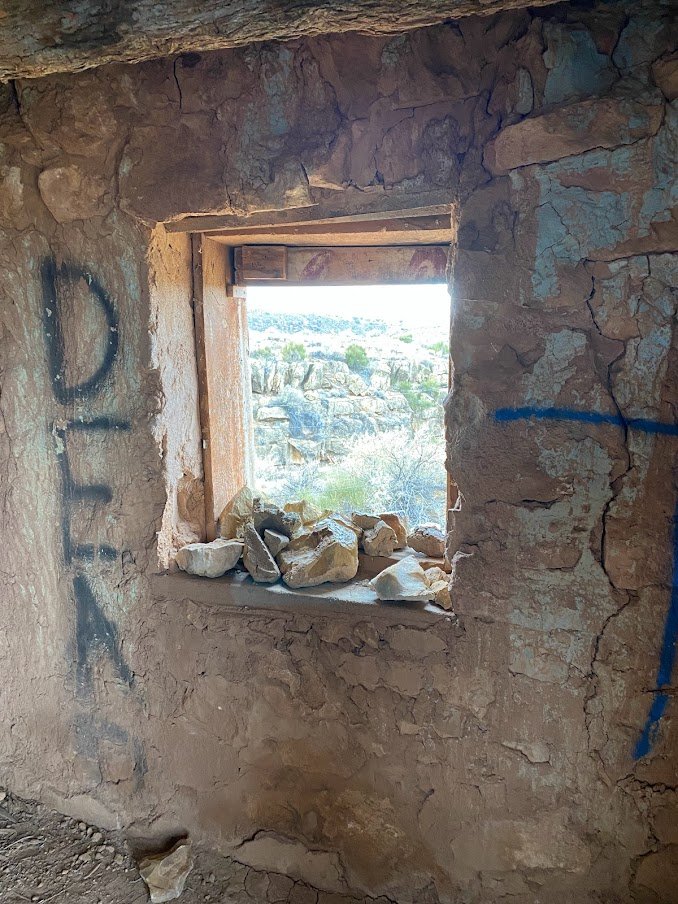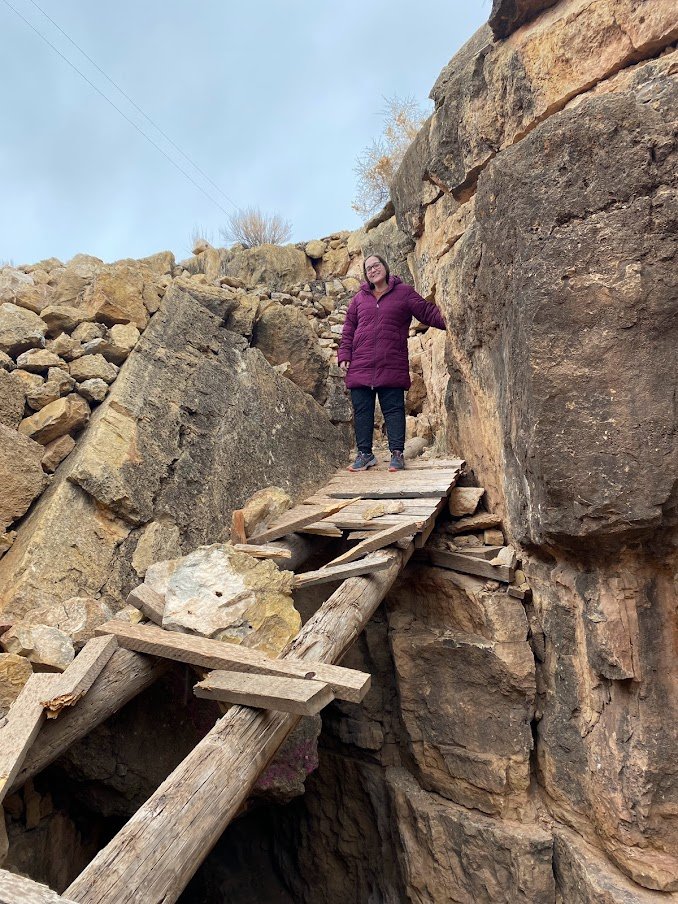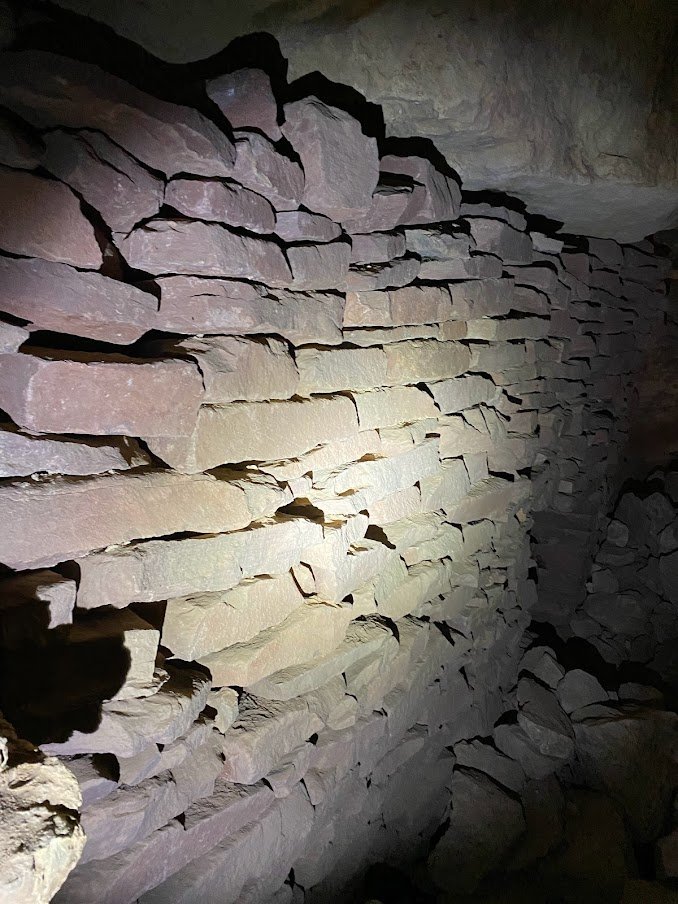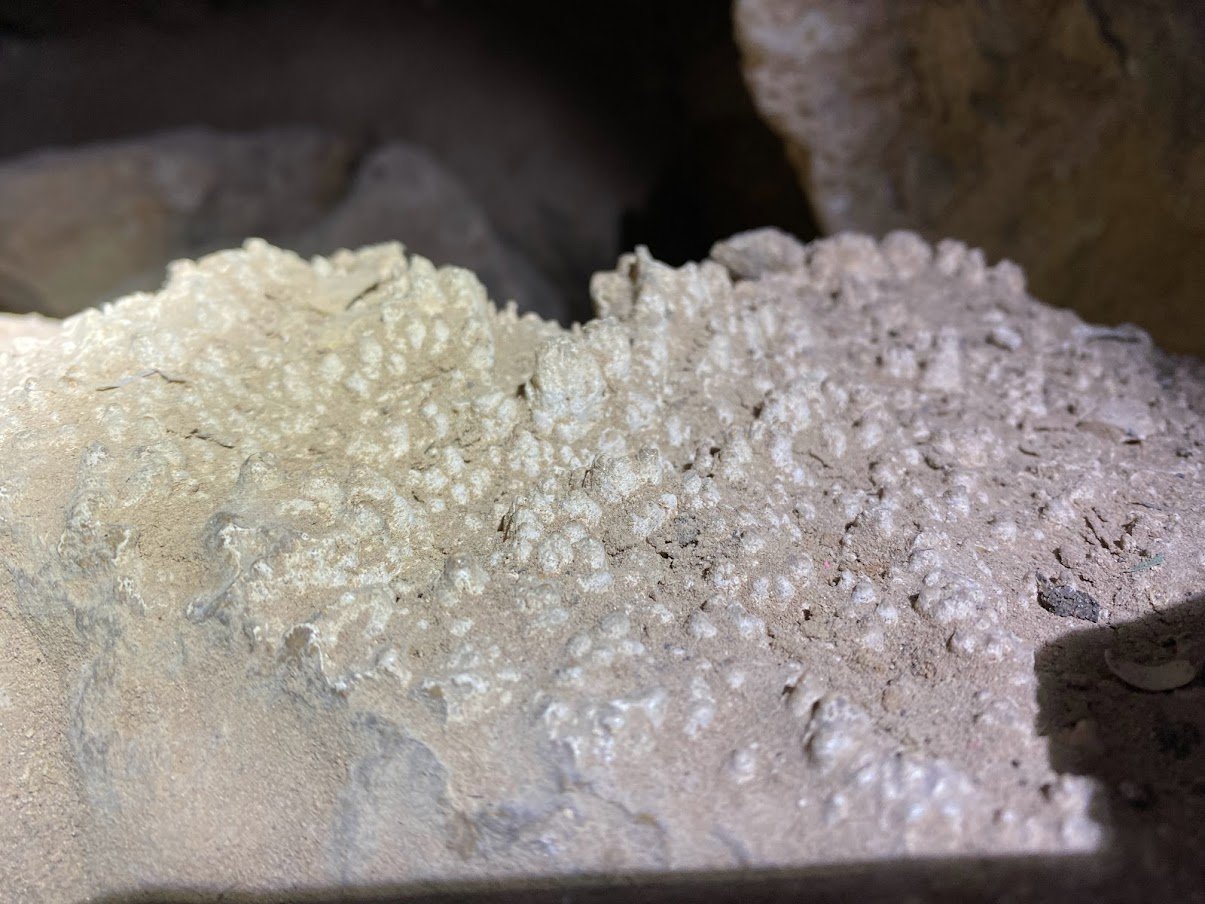Apache Death Cave - Two Guns, Arizona
Charity and I didn’t find the infamous death cave, or the abandoned Hopi gift shop above it, till our second visit to Two Guns.
This story is part two of my January 2022 road trip to Las Vegas. Read about our others stops here:
After an impromptu Friday night stop at my first-ever ghost town, I discovered I had a new love. I’ve always been a fan of history (I briefly thought I wanted to be a history teacher) and I’ve always been a fan of horror books and movies. Creepy abandoned buildings and desolate towns are the perfect combination of horror and history, so I’m amazed I’ve taken this long to discover a love of ghost towns.
Less than 24 hours after my first ghost town, I had already set my sights on another - this time in Arizona.
Enter Two Guns.
One of the most modern buildings in Two Guns is an abandoned gas station right off the I-40 exit.
Much like with Texola, the decision to stop at Two Guns was made with no prior knowledge it existed. As Charity drove, I scouted ahead on Google Maps, looking for attractions. That’s where the Apache Death Cave caught my eye. We’ll get to that later.
After exiting I-40 at Two Guns, halfway between Flagstaff and Winslow, the first thing you’ll be greeted by is an abandoned gas station that’s been spray painted from top to bottom. This station is without a doubt the most modern building in Two Guns, though I believe it’s been abandoned since the late 60s or early 70s.
You won’t find anything of value in the gas station, or any other building in Two Guns. That is, unless you find the history itself to be valuable, as I do. They’ve all been picked clean over.
Visiting at night severely limited our visibility of the town, and we missed a significant portion of it, but I’m still glad our first impression of the town was under the crushing blanket of darkness. Even though I had no prior knowledge of the morbid history of the town, the air still felt heavy around us, and the dancing shadows cast by my flashlight played tricks on our imagination.
Perhaps it was the surprise greeting from the dog at Texola fresh in my memory, but I kept imagining large animals sneaking up on us, just out of sight.
We started to follow a dirt road near the gas station in order to find the death cave, but under the veil of darkness we didn’t trust the rocky soil in front of us not to lead us straight off a cliff, and we didn’t trust Google Maps to have the exact location of the cave anyways. Turns out, you can actually follow Google Maps straight to it.
Driving up on a run-down building that advertises mountain lions, in the dark, in the middle of nowhere, immediately imprinted on my mind a fear of falling prey to some giant predator stalking just out of sight.
Chief Crazy Thunder’s Zoo
Backtracking to the gas station, we instead turned down an abandoned and overgrown stretch of Route 66 that was barely holding itself together. The road dead-ended at the coolest building in Two Guns - Chief Crazy Thunder’s Zoo.
I won’t pretend to say definitively which buildings are which in the old settlement. My research is limited to what I can find online, and most of the online info is contradictory. I have yet to find an authoritative online resource on the area that cites its sources. If anyone has a reputable resource that they would be willing to share, I’d love to see it.
Everything I’ll say here should be taken with a grain of salt as oral tradition, rather than encyclopedic.
Henry “Crazy Thunder” Miller acquired a lease from the land’s owners, Earl and Louise Cundiff, in 1925 and set his sights on making the area a Route 66 tourist attraction. He constructed his zoo on the rim of Canyon Diablo and built a wooden bridge down to the Apache Death Cave.
The zoo held mountain lions, snakes, lizards, cougars and more, and the chicken-wire cages are still there to this day, though in shambles. Miller was even attacked by a mountain lion and lived to tell the tale.
Miller reportedly got into a dispute with the Cundiffs over the extent of his lease and his rights to the land. That dispute ended in Miller shooting Earl Cundiff to death, which he was acquitted of despite Cundiff being unarmed. He soon left Two Guns and started anew in New Mexico.
Charity and I walked through the zoo, down the steps past the animal cages, and soon stumbled upon Canyon Diablo itself. Keep in mind, we didn’t know the first thing about Two Guns during our first visit. We didn’t even know there was a canyon there at all, and if I didn’t carry a flashlight at all times, we might well have stumbled right over the rim.
Billy the Kid reportedly hid out in Canyon Diablo in the winter of 1879-1880. In 1889 a group of train robbers supposedly hid their loot somewhere in Canyon Diablo, but it has never been recovered. At least, nobody has admitted to finding it. A posse caught up with the bandits, but they had already ditched the spoils.
Canyon Diablo Bridge
From there we spotted the Canyon Diablo Bridge, a purportedly abandoned bridge built in 1915 that was closed in 1938. Someone might want to tell the locals that it’s closed, however, because on our second visit to Two Guns we spotted a pickup truck driving over the deteriorating structure that we were initially nervous even to walk across.
The bridge was constructed for a measly $9000, adjusted for inflation to about $250,000, showing that American engineering really hasn’t progressed much in the past century. I certainly wouldn’t expect a bridge constructed for a quarter million in this day and age to make it a decade, but then again I’m from Oklahoma where our roads are built from bubblegum and daydreams.
This marvel of a bridge was part of the National Old Trails Road, which became Route 66 in 1926, and remained in active use until I-40 bypassed Two Guns. It was added to the National Register of Historic Places in 1988.
After scaling some large rocks and hopping a barbed wire fence to reach the bridge, Charity finally decided she’d had enough. I have to say I can’t blame her. With no knowledge of the area, in the middle of the night, in sub-freezing temperatures, searching for the site of a massacre, in a canyon named after Satan, and faced with a bridge whose structural integrity was questionable, I have to say she did pretty darn good to bear with me that long.
Finally, we departed for Las Vegas.
Two Guns By Day
On the return trip from Las Vegas we stayed in Flagstaff Monday night and departed early Tuesday with a goal of reaching Amarillo that night. Around 11:00 a.m. I realized we were approaching Two Guns, giving us an opportunity to visit the Apache Death Cave we missed the first time, and we decided we had time to stop and spend a few hours exploring Two Guns by daylight.
We once again parked at the zoo and this time Charity was comfortable crossing the bridge after seeing the vandalism and tire tracks that showed it was still receiving occasional usage.
On the south end of the bridge, a large and crumbling stone structure still stands, which is either the home of the Cundiffs, or a general store they built. The large concrete front porch still stands in pieces right on the canyon rim, and a collapsed portion leads to an empty chamber beneath.
I couldn’t help but picture life on the edge of this canyon. What it must have been like living in the middle of nowhere, coexisting with the coyotes and the mountain lions and the rattlesnakes that undoubtedly hunt those lands. You can see for miles in the day time, but at night the canyon is like a beckoning maw, eager to swallow you whole with a single missed step.
Past the Cundiff house, half a dozen other structures are littered along a hundred-yard stretch of dirt road, some in great shape and some barely more than a foundation.
It’s hard to know what the buildings used to be, though one of these days I hope to find a local historian who can help paint me a better picture of this fascinating Arizona ghost town. I’ve read that there was a restaurant there, stores, a coffee shop, a motel, a tavern, and a few houses. The zoo was also supposedly relocated. One building that was easy to identify is a still-standing outhouse, though I don’t recommend using it.
The rounded two-story building that you see below is reportedly an old Texaco gas station from the 1930s, but I didn’t trust the fuel quality.
As we reached the most southwestern portion of ruins, it began to sprinkle on us, and a large storm could be seen rapidly approaching on the horizon. We still needed to find the Apache Death Cave, so we hustled back to the zoo and drove to look for the cave.
The Apache Death Cave
Finally, it was time to visit the macabre tourist destination that drew us to Two Guns in the first place.
Throughout the 1870s the Apache tribes in the area were conducting raids on Navajo villages and vanishing into the countryside before reinforcements could track them down. This went on for nearly a decade.
In June of 1878 the Apache slaughtered an entire Navajo village and kidnapped three young girls. A responding Navajo war party finally discovered the Apache’s hiding place by accident, after one of their group felt heat and heard voices rising from a cave vent in the ground beneath his feet.
The Navajo discovered the entrance to the cave, killed the guards, and surrounded the only exit. The Apache tried to negotiate their release with promises to return stolen goods and make compensation, but the Navajo demanded the release of the three girls. The Apache had already tortured the girls to death.
No negotiations would take place.
The Navajo launched burning brush into the cave and shot to death anyone who tried to flee. The rest of the Apache died of asphyxiation. 42 men were killed in the cave. Their bodies were stripped of any valuables and left to rot.
No native Americans ever used those caves again until Henry Miller arrived.
The stone house you see above sits right on the edge of the canyon above the Apache death cave. It was built by Hopi Indians for Miller and used as a gift shop for the cave. He also constructed a wooden walkway down to the cave, which is still there to this day, though in shambles.
Miller allegedly collected the bones of the Apache dead and sold them in his zoo. He also constructed fake cave-dweller ruins along the walls of the cave, which are still there to this day.
Charity was nervous to even come down the walkway into the cave, but she was also nervous about me being in there alone, so she soon followed me down. I can’t stress enough that you’ll need a flashlight to see in these caves. You should not enter these caves without somebody outside to call for help if something goes wrong.
These caves go for miles below the surface, with several different cavern systems. At least one of the cavern systems that was previously explored has been lost due to a cave collapse. There are large open rooms as well as tight corridors in which a larger person could easily be stuck.
Charity and I didn’t explore for long due to the incoming storm. It’s very dangerous to explore caves or hike in the desert during or immediately after a rain storm. We went maybe 100 yards into the caves - far enough to get past the rampant vandalism and see their true natural beauty.
Two Guns, Arizona Map
Even with our second visit, Charity and I failed to fully discover Two Guns. While we visited all of the oldest sites from the 1920s and 1930s, we failed to drive south past the abandoned gas station to discover the buildings from the 1960s. There are abandoned water tanks, a motel, showers and restrooms, and a gift store that are still somewhat intact, as well as an empty swimming pool.
I hope to return to Two Guns one day when I can arrange interviews with local experts and historians, but for now I’ll enjoy the memories of my two recent visits, and I hope it’s still intact when I return.
With exposed sites like this, there’s no guarantee that weather, vandalism, or a new land owner won’t snatch this history away from the world without warning. If you’re ever passing by Two Guns, Arizona, don’t miss your opportunity to visit this incredible ghost town.














